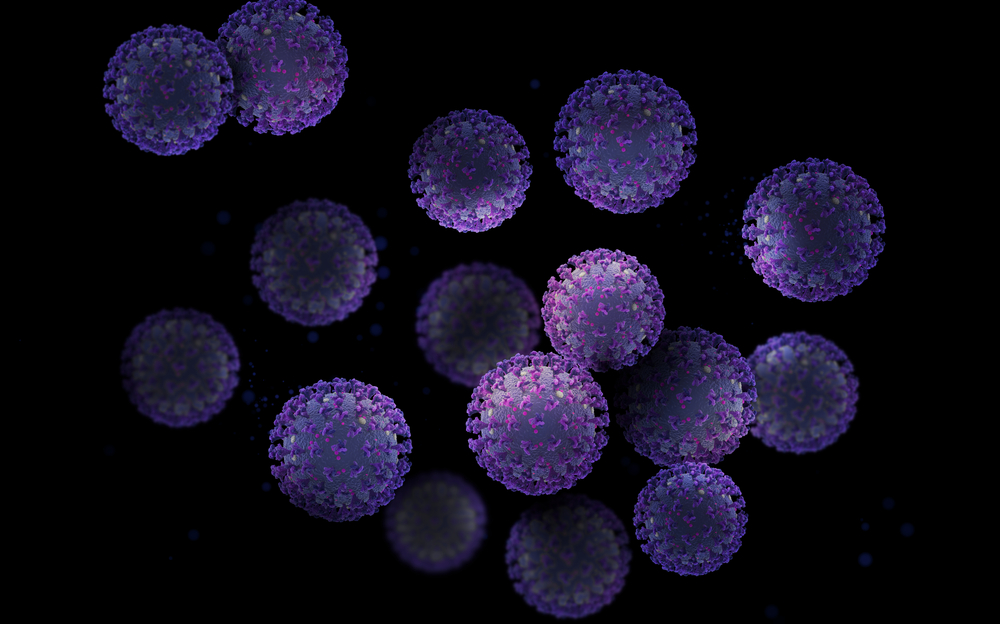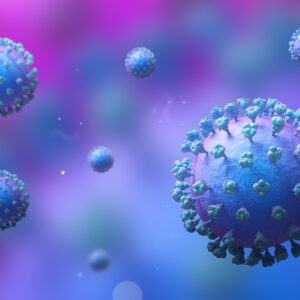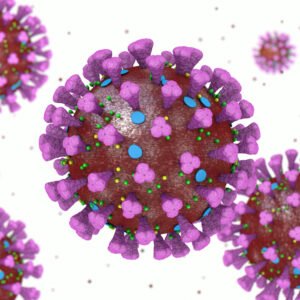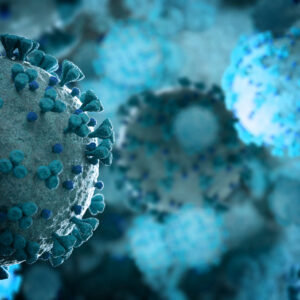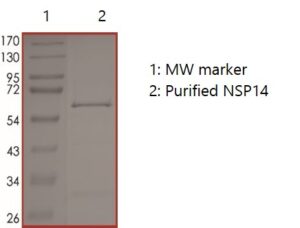
SDS-PAGE: Coomassie-stained reducing SDS-PAGE showing purified NSP14 methyltransferase.
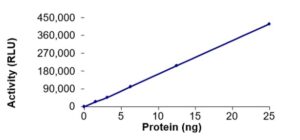
ELISA: The specific activity of SARS-CoV-2 NSP14 methyltransferase was determined to be 14.1 nmol/min/mg (Methyltransferase-Glo™ Methyltransferase Assay, Promega).
SARS-CoV-2 NSP14 Methyltransferase, Active
Price range: $647.43 through $1,265.44 excl. VAT
SARS-CoV-2 NSP14 methyltransferase is an active recombinant protein expressed in E. coli using a C-terminal His tag. SARS-CoV-2, previously known as the 2019 Novel Coronavirus (2019-nCoV), causes the pandemic COVID-19 disease.
SARS-COV-2 NSP14 METHYLTRANSFERASE, ACTIVE
SARS-CoV-2 NSP14 methyltransferase is an active recombinant protein expressed in E. coli using a C-terminal His tag. SARS-CoV-2, previously known as the 2019 Novel Coronavirus (2019-nCoV), causes the pandemic COVID-19 disease.
PRODUCT DETAILS – SARS-COV-2 NSP14 METHYLTRANSFERASE, ACTIVE
- SARS-CoV-2 NSP14 methyltransferase.
- Expressed in E. coli cells with an C-terminal His-tag and >80% purity.
- Presented as liquid in 50mM sodium phosphate, pH 7.0, 300mM NaCl, 150mM imidazole, 0.25mM DTT, 25% glycerol.
- Specific activity is 14.1 nmol/min/mg (Methyltransferase-Glo™ Methyltransferase Assay, Promega).
BACKGROUND
In December 2019 a novel coronavirus, severe acute respiratory syndrome coronavirus 2 (SARS-CoV-2), formerly known as the 2019 novel coronavirus (2019-nCoV) was identified in Wuhan, China, causing a world-wide pandemic (Wu et al., 2020). Three coronaviruses, SARS-CoV, MERS-CoV, and SARS-CoV-2 have been identified as being a highly pathogenic for humans, and there is currently no effective antiviral treatment. Therefore, studies are focused on rapid development of vaccines and antiviral drugs to prevent and treat coronavirus infection. There are several potential strategies to pharmacologically fight against the disease (COVID-19), including vaccines, monoclonal antibodies, oligonucleotide-based therapies, peptides, interferon therapies, and small-molecule drugs (Dömling & Gao, 2020).
Coronaviruses codes for a bifunctional non-structural protein 14 (NSP14) that is important for viral replication and transcription. NSP14 contains an N-terminal exo-ribonuclease (ExoN) domain for proof reading during viral replication and a C-terminal N-7 methyltransferase (N7-MTase) domain for mRNA capping. NSP14-ExoN is required for native recombination, and inactivation of ExoN results in decreased recombination frequency and altered recombination products (Gribble et al., 2021). NSP14 associates with several viral proteins (Ma et al., 2015). It can bind to NSP10 and the resulting complex exhibits enhanced ExoN activity in vitro (Bouvet et al., 2012). It can also bind to the polymerase complex (NSP12/NSP8/NSP7) forming a complex that retains all associated enzymatic activities (Subissi et al., 2014). NSP14 is known to be a good target for potential small molecule inhibitors against SARS-CoV-2 (Umar et al., 2021).
REFERENCES
- Bouvet, M. et al: RNA 3′-end mismatch excision by the severe acute respiratory syndrome coronavirus nonstructural protein nsp10/nsp14 exoribonuclease complex. Proc Natl Acad Sci USA. (2012), 109:9372–9377.
- Dömling A, Gao L. Chemistry and Biology of SARS-CoV-2. Chem. 2020;6(6):1283-1295.
Gribble J, Stevens LJ, Agostini ML, Anderson-Daniels J, Chappell JD, Lu X, Pruijssers AJ, Routh AL, Denison MR. The coronavirus proofreading exoribonuclease mediates extensive viral recombination. PLoS Pathog. 2021 Jan 19;17(1):e1009226. - Ma, Y. et al: Structural basis and functional analysis of the SARS coronavirus nsp14-nsp10 complex. PNAS, USA. (2015), 112(30):9436–9441.
- Reshamwala SMS, Likhite V, Degani MS, Deb SS, Noronha SB. Mutations in SARS-CoV-2 nsp7 and nsp8 proteins and their predicted impact on replication/transcription complex structure. J Med Virol. 2021 Jan 12.
- Subissi L, et al: One severe acute respiratory syndrome coronavirus protein complex integrates processive RNA polymerase and exonuclease activities. PNAS. U.S.A. 2014, 111: E3900–E3909.
- Umar HI, Siraj B, Ajayi A, Jimoh TO, Chukwuemeka PO. Molecular docking studies of some selected gallic acid derivatives against five non-structural proteins of novel coronavirus. J Genet Eng Biotechnol. 2021 Jan 25;19(1):16.
- Wu F. et al: A new coronavirus associated with human respiratory disease in China. Nature 579: 265-269, 2020.

